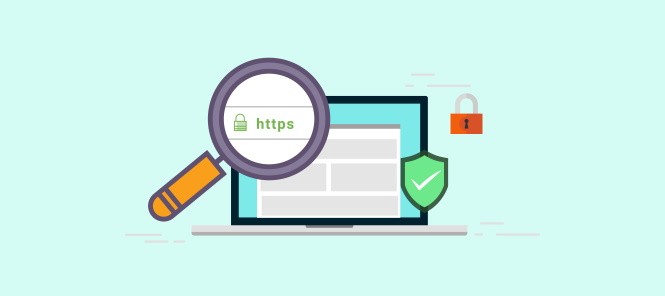The Comprehensive Guide to SSL Monitoring: Securing Your Digital Infrastructure with Proactive Strategies and Tools
SSL monitoring

Introduction
In the evolving landscape of online security, maintaining the integrity and performance of your website is paramount. SSL (Secure Sockets Layer) certificates play a vital role in safeguarding data transmitted between your website and its users. However, the installation of an SSL certificate is just the beginning. To ensure continuous protection and optimal performance, proactive SSL monitoring is essential. This comprehensive guide explores the importance of SSL monitoring, strategies for effective management, and the tools that can help you maintain a secure and high-performing website.
Understanding SSL Certificates
What Are SSL Certificates?
SSL certificates are digital certificates that encrypt data transmitted between a web server and a client, ensuring secure communication.
- Functionality: SSL certificates use cryptographic protocols to encrypt data, protecting it from interception and tampering.
- Types of SSL Certificates: Various types include Domain Validated (DV), Organization Validated (OV), and Extended Validation (EV), each offering different levels of validation and trust.
The Importance of SSL Monitoring
Effective SSL monitoring is crucial for maintaining ongoing security and performance.
- Avoiding Security Breaches: Regular monitoring ensures that SSL certificates are up to date and properly configured, minimizing the risk of security breaches.
- Maintaining User Trust: Continuous monitoring helps prevent disruptions caused by expired or misconfigured certificates, which can affect user trust and site credibility.
Benefits of SSL Monitoring
Enhancing Security
SSL monitoring is critical for protecting sensitive data and ensuring robust security.
- Preventing Data Theft: Regular checks ensure that SSL certificates are valid and functioning correctly, reducing the risk of data theft and unauthorized access.
- Mitigating Security Risks: Ongoing monitoring helps identify and address potential vulnerabilities in SSL configurations, enhancing overall security.
Improving Website Performance
SSL certificates can impact website performance, and effective monitoring can help optimize it.
- Optimizing Load Times: Monitoring tools can identify and resolve SSL-related performance issues, leading to faster page load times and a better user experience.
- Ensuring Compatibility: Regular checks ensure that SSL configurations are compatible with the latest browsers and devices, avoiding performance problems.
Ensuring Compliance
For businesses, SSL monitoring is a key component of regulatory compliance.
- Adhering to Standards: Continuous monitoring helps ensure compliance with industry regulations that require secure data transmission.
- Simplifying Audits: Properly managed SSL certificates facilitate compliance audits and demonstrate adherence to security standards.
Key Components of SSL Monitoring
Automated Monitoring Tools
Automated tools are essential for efficient SSL management.
- Continuous Monitoring: Automated tools provide continuous monitoring of SSL certificates, detecting issues such as expirations or misconfigurations.
- Centralized Dashboard: Centralized dashboards offer a comprehensive view of all SSL certificates, simplifying management and monitoring.
Real-Time Alerts and Notifications
Timely alerts are crucial for addressing SSL issues promptly.
- Expiration Alerts: Automated notifications inform administrators of upcoming certificate expirations, allowing for timely renewal.
- Security Alerts: Real-time alerts about security issues help address vulnerabilities before they impact the website.
Configuration Analysis
Regular analysis of SSL configurations ensures optimal security and performance.
- Cipher Suite Evaluation: Monitoring tools assess the strength of cipher suites used in SSL/TLS configurations to prevent weaknesses.
- Configuration Reviews: Periodic reviews of SSL/TLS settings ensure adherence to best practices and industry standards.
Best Practices for SSL Monitoring
Choose the Right Monitoring Tools
Selecting the right tools is crucial for effective SSL management.
- Feature Set: Opt for tools that offer comprehensive scanning, alerting, and reporting features to cover all aspects of SSL monitoring.
- User Experience: Choose tools with intuitive interfaces that simplify the management process and make it easier to address issues.
Implement Regular Reviews
Regular reviews of SSL certificates and configurations are essential.
- Scheduled Inspections: Set up a routine schedule for reviewing SSL certificates and configurations to ensure they remain valid and effective.
- Update Protocols: Regularly update SSL configurations to address new vulnerabilities and adapt to evolving security standards.
Educate Your Team
Training and awareness are key to successful SSL monitoring.
- Ongoing Training: Provide regular training for your team to keep them informed about the latest SSL management practices and tools.
- Promote Security Awareness: Foster a culture of security awareness to ensure SSL management is prioritized and understood throughout the organization.
Recommended SSL Monitoring Tools
DigiCert CertCentral
DigiCert CertCentral offers a comprehensive solution for SSL certificate management.
- Unified Dashboard: Features a centralized dashboard for managing and monitoring SSL certificates across multiple domains.
- Automated Renewals: Includes automated renewal processes to ensure certificates remain valid.
Entrust Certificate Manager
Entrust provides robust SSL monitoring and management tools.
- Centralized Control: Offers centralized control for SSL certificates, simplifying management and monitoring.
- Advanced Reporting: Provides detailed reports on SSL vulnerabilities and configuration issues.
GlobalSign SSL Manager
GlobalSign offers a reliable platform for managing SSL certificates.
- Centralized Dashboard: Features a unified dashboard for managing SSL certificates and monitoring security status.
- Real-Time Alerts: Provides real-time alerts for certificate expirations and security issues.
Common Challenges and Solutions
Managing Multiple Certificates
Handling SSL certificates for multiple domains can be challenging.
- Use Wildcard Certificates: Wildcard certificates cover multiple subdomains with a single certificate, simplifying management.
- Employ Management Tools: Utilize management tools that offer centralized control over multiple SSL certificates.
Addressing Expired Certificates
Expired certificates can lead to security warnings and loss of user trust.
- Automate Renewals: Set up automated renewal processes to ensure certificates are always current.
- Implement Expiration Alerts: Use alerts to notify administrators of upcoming expirations, allowing for timely action.
Keeping Up with Security Standards
Staying current with evolving security standards is essential.
- Regular Updates: Update SSL/TLS configurations to align with the latest security standards and best practices.
- Monitor Industry Trends: Stay informed about new developments and trends in SSL/TLS security.
Conclusion
SSL monitoring is a crucial aspect of website security, performance optimization, and regulatory compliance. By implementing effective monitoring practices, businesses can protect their digital assets, enhance user experience, and ensure adherence to industry standards. Invest in the right tools, stay informed about best practices, and educate your team to achieve comprehensive SSL management and maintain a secure online presence.
Call to Action:
Take control of your website’s security and performance today by adopting a robust SSL monitoring strategy. Explore top monitoring tools, set up automated alerts, and ensure your team is well-prepared. Start optimizing your SSL management to secure your digital infrastructure effectively.









